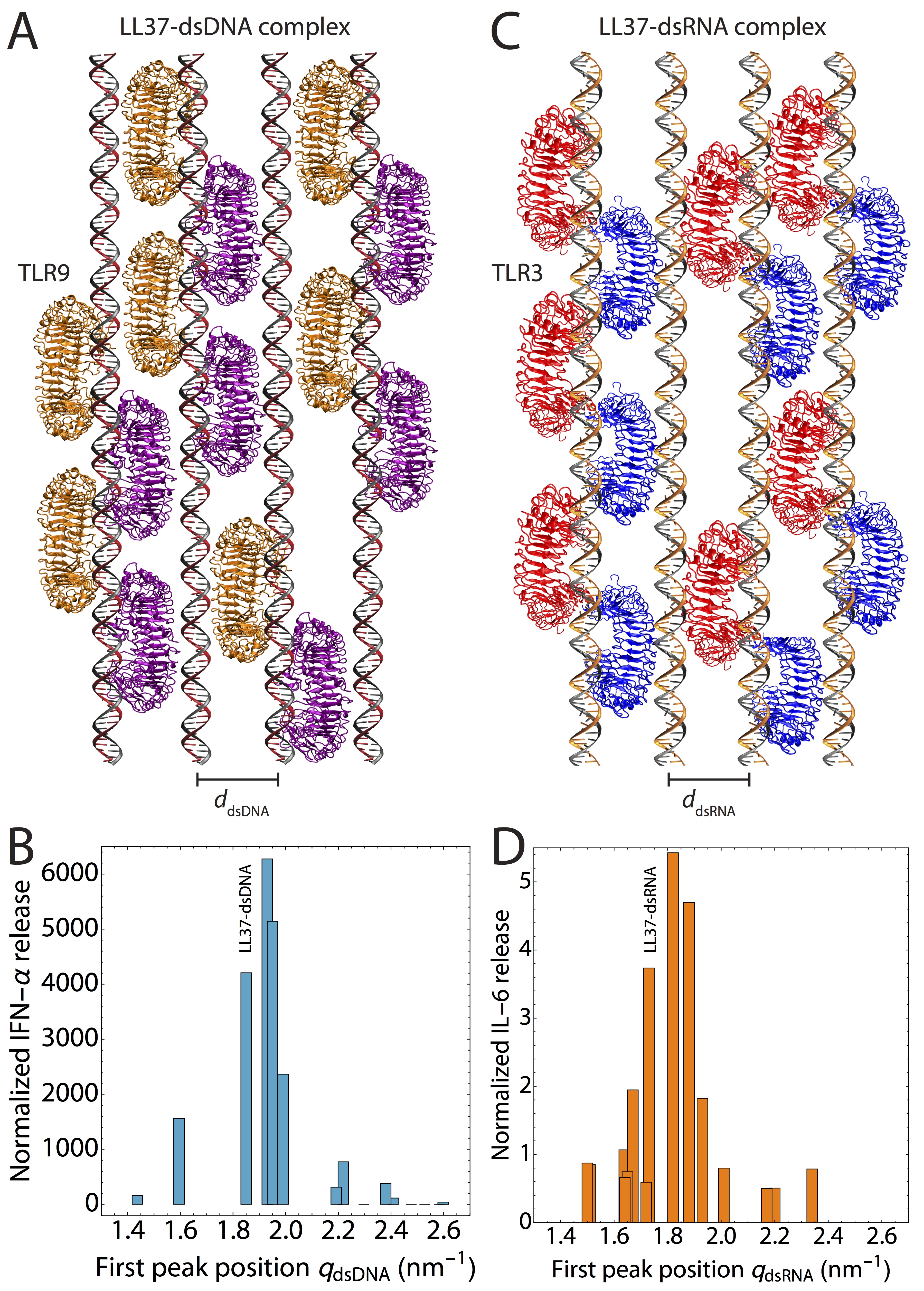 TLR signaling by nanocrystalline DNA and dsRNA complexes
TLR signaling by nanocrystalline DNA and dsRNA complexes
Modulation of toll-like receptor signaling by antimicrobial peptides
Abstract
Antimicrobial peptides (AMPs) are typically thought of as molecular hole punchers that directly kill pathogens by membrane permeation. However, recent work has shown that AMPs are pleiotropic, multifunctional molecules that can strongly modulate immune responses. In this review, we provide a historical overview of the immunomodulatory properties of natural and synthetic antimicrobial peptides, with a special focus on human cathelicidin and defensins. We also summarize the various mechanisms of AMP immune modulation and outline key structural rules underlying the recently-discovered phenomenon of AMP-mediated Toll-like receptor (TLR) signaling. In particular, we describe several complementary studies demonstrating how AMPs self-assemble with nucleic acids to form nanocrystalline complexes that amplify TLR-mediated inflammation. In a broader scope, we discuss how this new conceptual framework allows for the prediction of immunomodulatory behavior in AMPs, how the discovery of hidden antimicrobial activity in known immune signaling proteins can inform these predictions, and how these findings reshape our understanding of AMPs in normal host defense and autoimmune disease.